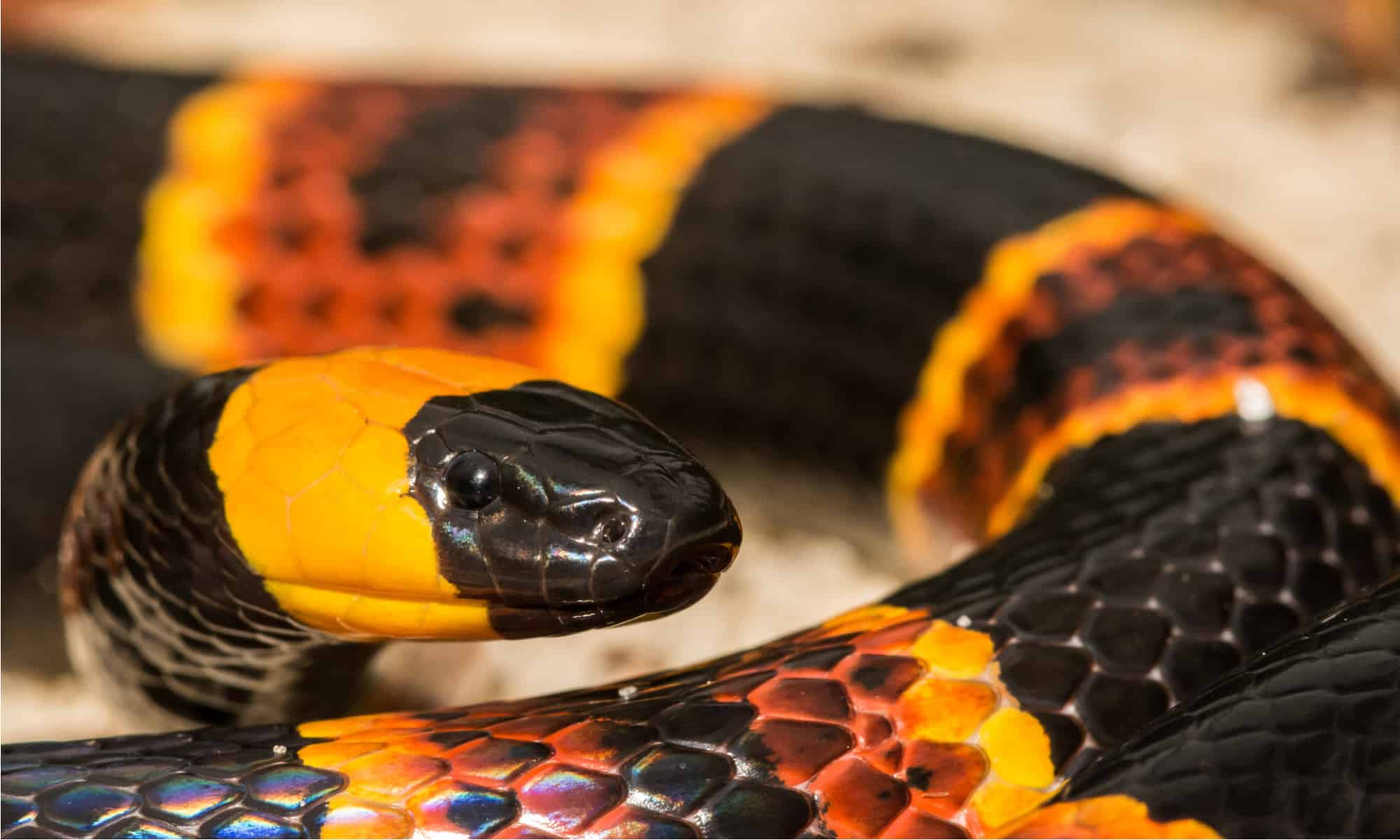South Carolina is home to a wide array of natural habitats. Vast pine forests, swampy lowlands, and coastal shores are home to some of the most interesting animals in the eastern United States, especially reptiles. The state of South Carolina is home to 38 different species of snake, of which six are venomous. Today, we will take a closer look at a few of these scaly reptiles, particularly the venomous ones! Let’s discover all of the venomous (poisonous) snakes in South Carolina.
Venomous (Poisonous) Snakes in South Carolina
Before we get started, it’s important to clear up a bit of a naming problem. As a general rule, snakes are venomous, not poisonous. Venom is something that needs to be injected, while poison is something that needs to be ingested (swallowed). If it bites and is dangerous, it’s venomous. If you bite it and it’s dangerous, it’s poisonous!
Of all of the species of snakes that live in the state of South Carolina, only a few are venomous. In fact, only six distinct species of the nearly 40 that live in the state have venom that is considered dangerous to humans. We will give an overview of each of the dangerous snakes that live in South Carolina. Let’s get started!
Copperhead
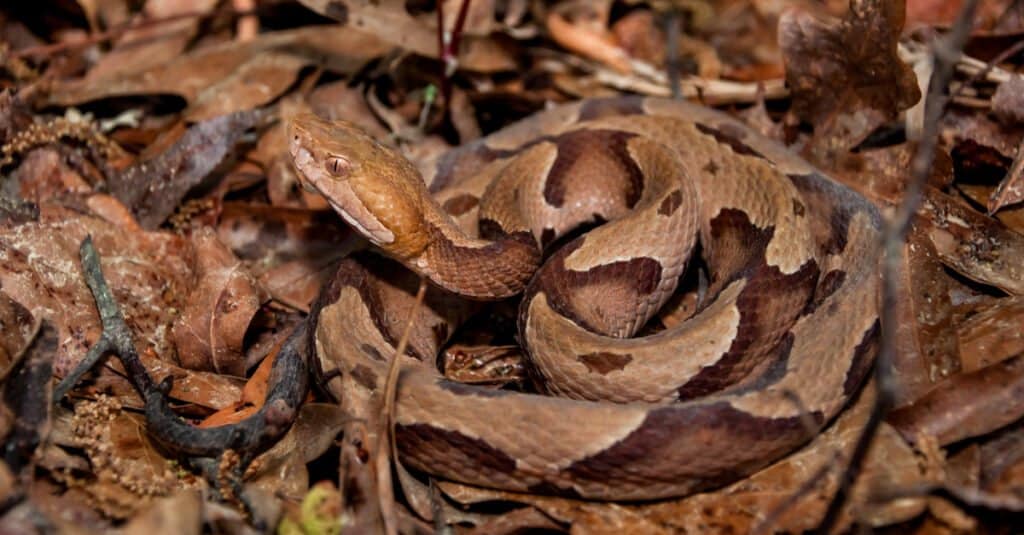
Copperheads are found across the entire state of South Carolina.
©Jay Ondreicka/Shutterstock.com
Copperheads are among the most common snakes in the eastern United States. These snakes are coppery brown and blend in perfectly with their surroundings, making them incredibly hard to see. Their pattern is easy to tell, as the brown splotches are in the shape of an hourglass, with the thin part in the middle. Additionally, their eyes are usually golden yellow and slit like a cat’s. Most copperheads are 2-3 feet long and are thick.
Copperheads live across the entire state of South Carolina. Additionally, they are responsible for the most bites of any venomous snake in the US. Thankfully, their venom isn’t usually deadly, with less than 0.01% of bites being fatal. Still, these camouflaged snakes are hard to see, and if bitten, medical assistance is needed immediately.
Eastern coral snake
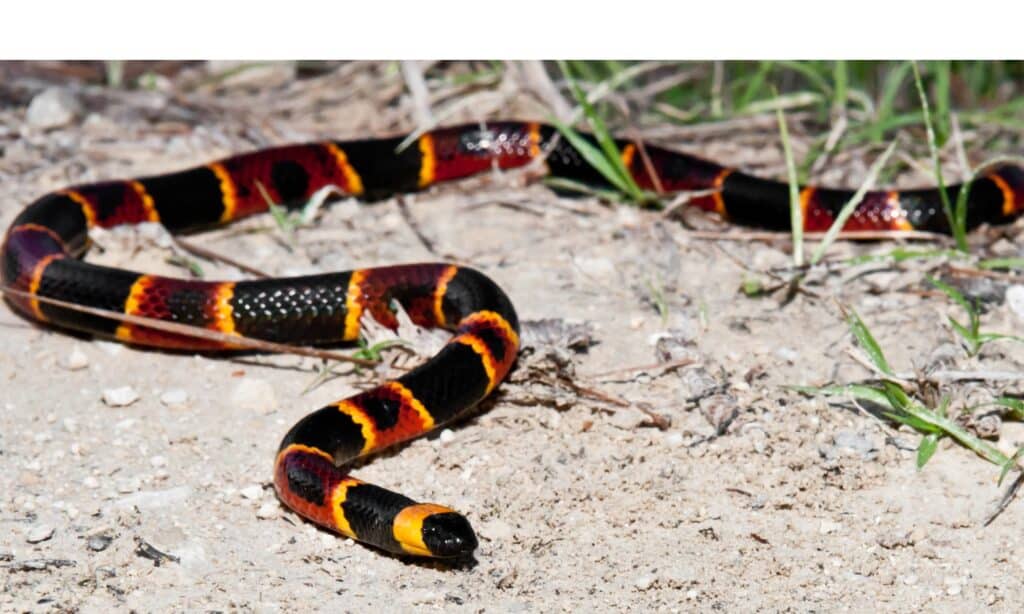
Eastern coral snakes live in sandy regions across South Carolina.
©iStock.com/JasonOndreicka
Eastern coral snakes are among the most interesting snakes in the United States. These snakes have a unique banding pattern that goes black, yellow, and red. The famous rhyme associated with them is “red touch black, friend of Jack. Red touch yellow, kill a fellow.” These reclusive snakes are rarely seen, however, and spend most of their life under brush and away from humans. They are rarely longer than a few feet long and are much thinner than any other venomous snake on our list.
Eastern coral snakes can be found in sandy soil along the coast and low country region of the state. They are quite venomous and have a venom related to that of a cobra. Bites are extremely rare, and deaths aren’t statistically significant.
Eastern diamondback rattlesnake

Eastern diamondbacks live in the coastal plains region of South Carolina.
©Chase D’animulls/Shutterstock.com
Eastern diamondback rattlesnakes are the largest venomous snakes in the entire country. These snakes are rattlesnakes and have the characteristic rattle that they shake when threatened. They are sandy-colored and have a dark diamond pattern across their backs, hence their name. Additionally, their scales are heavily keeled and often ring the diamond pattern in white. The largest members have been measured at close to 8 feet, but most that are seen in the wild are closer to 6.
Eastern diamondbacks aren’t super common to see, although they are present through the sandy coast year-round. They are extremely dangerous but don’t go out of their way to attack humans. If you hear a rattle or see a diamondback, simply walk the other way and leave it be.
Cottonmouth (water moccasin)
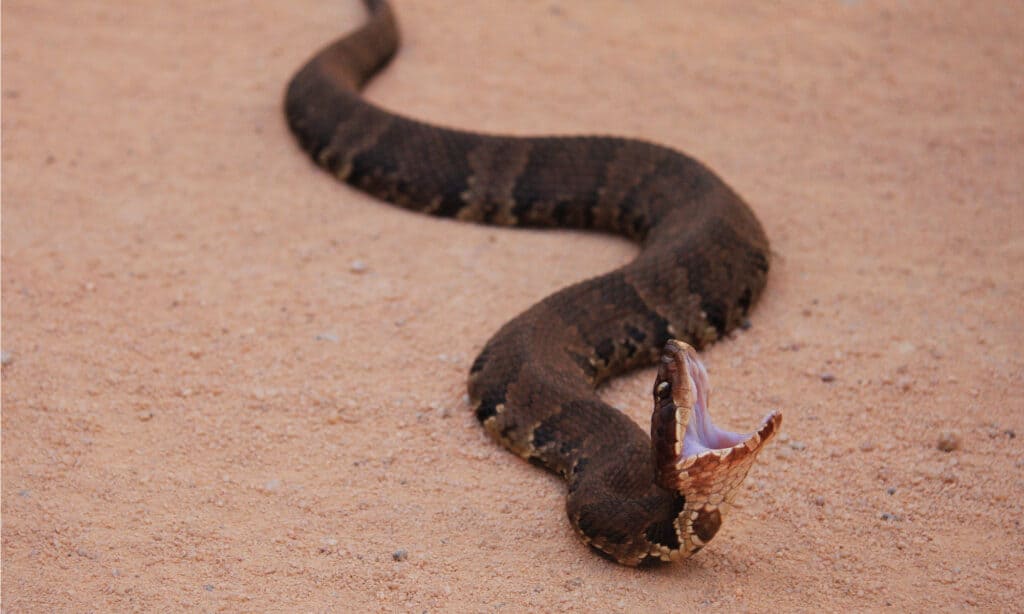
Cottonmouths are aquatic snakes that can be found along the piedmont and coastal plains of South Carolina.
©Nathan A Shepard/Shutterstock.com
The cottonmouth, otherwise known as the water moccasin, is a commonly encountered water snake. Besides the copperhead, the cottonmouth is likely the most encountered venomous snake in South Carolina. Cottonmouths are dark gray or black and are extremely thick-bodied. Additionally, they flash their white mouths as a warning if someone gets too close, giving them their name.
Cottonmouths are most commonly found along the coastal plains of South Carolina, particularly in the swampy lowlands regions. They live in the piedmont, but sightings are much rarer. The most likely place to see a cottonmouth is around freshwater sources like rivers, streams, and swamps.
Timber rattlesnake
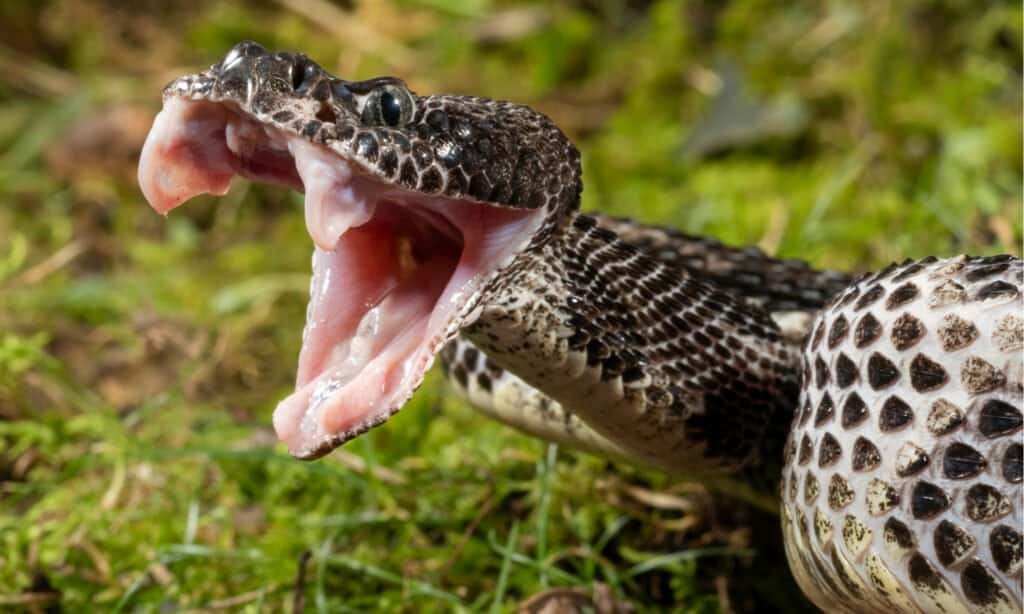
Timber rattlesnakes live throughout the entire state of South Carolina.
©Joe McDonald/Shutterstock.com
The timber rattlesnake goes by two names in South Carolina, depending on where it lives. When it’s seen in the mountain regions, it’s known as the timber rattlesnake, but individuals along the coastal plains are known as canebreak rattlesnakes. The mountain form of the snake is usually yellow to black, with dark bands across its back. Coastal snakes are usually lighter and come in shades of tan and pink-orange with dark stripes.
Timber rattlesnakes are dangerous snakes that can be found across the entire state of South Carolina. They generally grow between 3-5 feet long and are excellent at ambushing prey. Although they won’t attack humans unprovoked, they can bite out of fear when accidentally stepped on or handled.
Pygmy rattlesnake
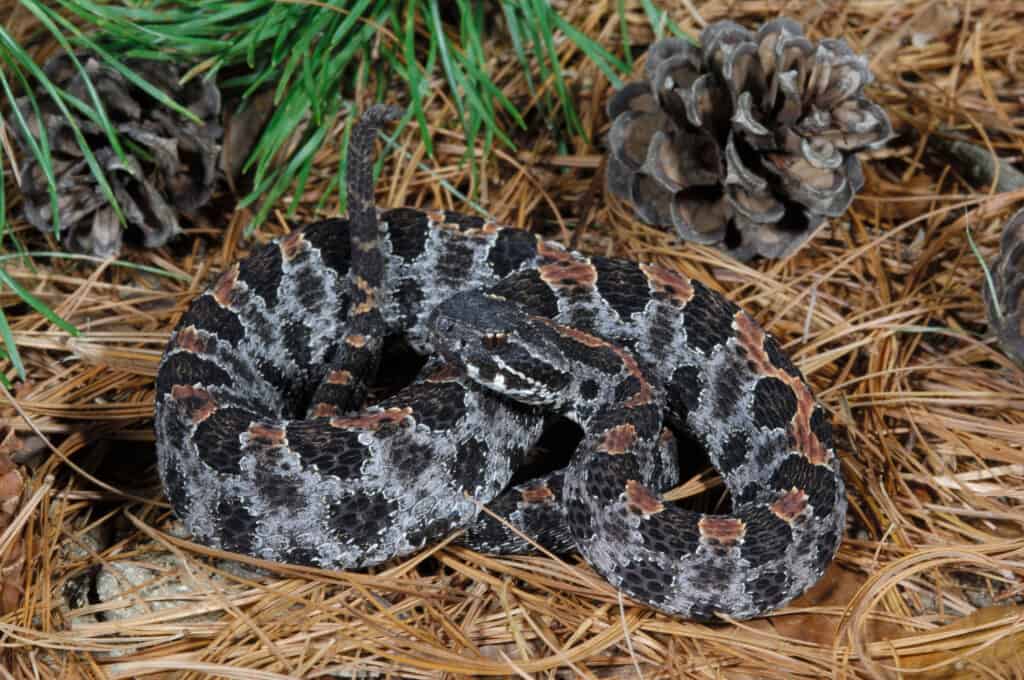
The pygmy (pigmy) rattlesnake lives across most of South Carolina.
©Breck P. Kent/Shutterstock.com
The pygmy rattlesnake (sometimes spelled pigmy) is the smallest member of the rattlesnake family in the country. Pygmy rattlesnakes are usually pink, pinkish-red, dark charcoal or light gray and have dark splotches down their backs. Additionally, they often have a faint red stripe running down their back. Despite having a rattle, it’s small and often not heard by humans.
Pygmy rattlesnakes live across the entire state of South Carolina. They prefer regions close to freshwater and can be found in all sorts of habitats across the state.
Discover the "Monster" Snake 5X Bigger than an Anaconda
Every day A-Z Animals sends out some of the most incredible facts in the world from our free newsletter. Want to discover the 10 most beautiful snakes in the world, a "snake island" where you're never more than 3 feet from danger, or a "monster" snake 5X larger than an anaconda? Then sign up right now and you'll start receiving our daily newsletter absolutely free.
Thank you for reading! Have some feedback for us? Contact the AZ Animals editorial team.

